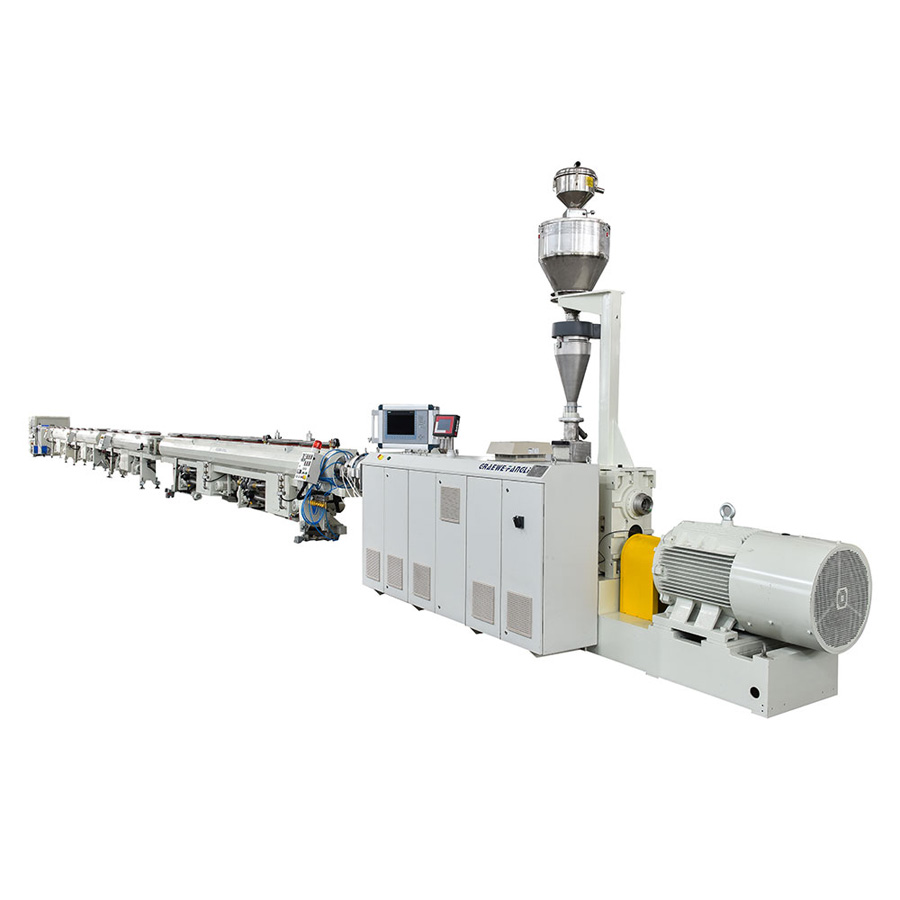Here is an overview of the extrusion line for PE pipe production
2023-12-13
The extrusion process for producing polyethylene (PE) pipes involves using an extruder to melt and shape the plastic material into a continuous pipe. This process is widely used for manufacturing pipes of various sizes and applications, including water supply, gas distribution, and industrial piping. Here is an overview of the extrusion line for PE pipe production:
1. Raw Material Handling:
- The primary raw material for PE pipes is polyethylene resin, which is usually provided in pellet form. The pellets are stored in a hopper and fed into the extruder.
2. Extruder:
- The extruder is a crucial component of the PE pipe extrusion line. It consists of a screw inside a barrel. The screw rotates, conveying the plastic pellets forward. As the pellets move through the barrel, they are gradually heated and melted by external heaters.
3. Melted Polymer Extrusion:
- The molten polymer is forced through a shaping die at the end of the extruder. The die shapes the molten material into the desired form, typically a cylindrical shape for pipes.
4. Cooling and Sizing:
- Once the molten polymer leaves the die, it is rapidly cooled to solidify it. This cooling process can be achieved using a water bath or a series of cooling tanks. The sizing of the pipe is also controlled during this stage to ensure the final product meets the required specifications.
5. Haul-off Unit:
- The haul-off unit consists of gripper belts that pull the pipe away from the extruder at a controlled speed. This helps maintain uniformity in the pipe's dimensions.
6. Cutting:
- After the desired length of the pipe is extruded and cooled, it is cut to the specified size. This is typically done using a cutting machine that ensures precision in the length of the produced pipes.
7. Inspection and Quality Control:
- The extruded PE pipes undergo inspection for quality control. This may include checking the dimensions, wall thickness, and overall quality of the pipes.
8. Coiling or Packaging:
- The final step involves coiling the pipes onto spools or packaging them in bundles. Coiling is common for smaller diameter pipes, while larger pipes are usually bundled for transportation.
Additional Considerations:
- Additives and Colors: During the extrusion process, additives such as stabilizers and colorants may be introduced to enhance the properties of the PE pipe or to provide color-coding for different applications.
- Crosslinking: In some cases, crosslinking processes may be applied to enhance the properties of the PE pipe, such as improving heat resistance and chemical resistance.
- Quality Assurance: Quality control measures are crucial throughout the production process to ensure that the final PE pipes meet industry standards and specifications.
The extrusion line for PE pipes is a well-established and efficient method for mass production of pipes with consistent quality. The process can be adapted for various PE grades, allowing for the production of pipes with different performance characteristics suitable for diverse applications.



